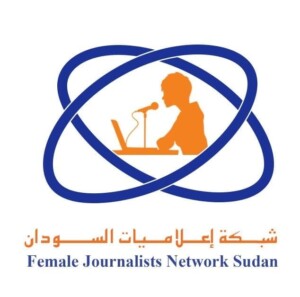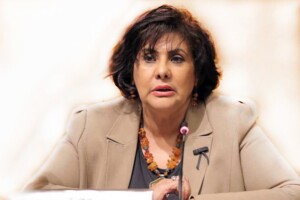Sudan Feature: Does today’s Civil Disobedience represent a popular uprising?
Whether the 19 December Civil Disobedience action in Khartoum shakes the ruling power and has an effect on the recent austerity measures or not, from a historical perspective today’s mass strike resembles protests which twice ousted military presidents in the country’s past.
Whether the 19 December Civil Disobedience action in Khartoum shakes the ruling power and has an effect on the recent austerity measures or not, from a historical perspective today's mass strike resembles protests which twice ousted military presidents in the country’s past.
Today, a large number of Sudanese political forces and civil society members, as well as displaced people in camps in Darfur, plan to show their full support to the civil disobedience action. Photos of empty streets circulating on social media today, under the hashtag #Dec19Disobedience, conclude two weeks of buzz about the strike but 19 December is most likely not the last day Sudan will witness protests.
The current civil disobedience actions are the response of Sudanese people against austerity measures implemented in November. So far it has led to huge increases in prices of fuel, electricity, food, and medicines – sparking discontent among the Sudanese. During a civil strike against the measures from 27 to 29 November, the streets of Khartoum also remained quiet as many shop owners kept their doors closed and people stayed at home.
A prominent role in the protests is played by social media as activists use the channels to mobilise and safely coordinate their actions. While President Omar Al Bashir, in seat for 27 years, is downplaying the role of “keyboard activists” in the current protest actions, Sudan has showed in the past that widely supported actions of civil disobedience can usher in a significant change for its politics.

The civil disobedience action is planned on 19 December, on the day independence was declared by the Sudanese parliament in 1955.
1964 Revolution
The October Revolution overthrew Sudan's first military regime, headed by General Ibrahim Abboud. After Abboud took power in 1958 as an interim measure, the army did not return to its barracks anymore. Growing resistance in the south against his Islamisation of politics, and in general, the worsening economic situation, led to a civil war in 1963. The stage was set for demonstrations to rise.
The killing of protesting student Ahmed El Gurashi on 21 October 1964 triggered widespread student protests against Abboud's government. They were soon joined by middle class, and lawyers declared a very effective general strike. The next day, the National Front of Professionals – including university staff, teachers, judges, lawyers, engineers, and doctors – and the National Front of Political Parties joined the campaign, forming one organisation: the United Front.

Funeral procession that turned into a protest for Ahmed El Gurashi, a student activist shot by the Khartoum police in 1964 (file photo)
In less than a week, the campaign and strikes ended with the dissolution of the Council of Ministers and the Supreme Council of the Armed Forces, and a transitional government to be established. To date, people in Sudan celebrate the ‘October Revolution’ annually – in small private groups, at home.
1985 Intifada
The intifada against the regime of Jaafar Nimeiri, Sudan’s second military dictator, in 1985, also stemmed from public protests, that gained the broad support of trade unions. That year, in April, the people took to the streets in protest against price hikes. The discontent about Nimeiri’s oppressive policies grew particularly since late 1983, when Nimeiri introduced the Sharia, and renewed fighting broke out in the south.
In March 1985, a few days after the government doubled the prices of bread, petrol, and public transport, protests broke out in Sudan. Soon university students, union activists, and tens of thousands of others joined in. Many were detained and a state of emergency was declared. The military at first watched impartially but eventually sided with the popular uprising. On 5 April 1985, the Sudanese army seized power, and a year later, power was relinquished to a democratically elected government headed by the then pro-Islamist Umma Party leader El Mahdi.
2013 Demonstrations
The new government, that was largely unable to better the economic situation, did not last long. Omar Hassan Al Bashir led a group of officers in a military coup d'état in 1989. After more than a decade of his rule, Sudan witnessed the outbreak of new civil wars and the secession of the south.
In 2013, the country suffered from a rampant inflation, shortages of consumer items including bread, cooking fuel and medicines, and a high level of unemployment. That year, in September, widespread protests against subsidy cuts were quelled by riot police. Any possible popular uprising that time was nipped in the bud by the violent response of security and militia forces.
 “The current regime is ruthless in terms of dealing with demonstrators,” Hafiz Mohamed, an expert on Sudan and programme coordinator of the NGO Justice Africa Sudan, explained to Radio Dabanga. People remember what happened with the demonstrators of September 2013, thus creating “a psychological barrier of fear to demonstrate”.
“The current regime is ruthless in terms of dealing with demonstrators,” Hafiz Mohamed, an expert on Sudan and programme coordinator of the NGO Justice Africa Sudan, explained to Radio Dabanga. People remember what happened with the demonstrators of September 2013, thus creating “a psychological barrier of fear to demonstrate”.
Economic hardship and public discontent about the ruling power now may be similar to past popular uprisings, but the riot police then used less force against demonstrators. According to human rights organisations, about 200 people were killed in the 2013 September Demonstrations.
“This regime is ready to do anything to stay in power.”
Trade unions
In addition, the 2013 protests were carried out mainly by university students – without the mobilisation of the middle class, Mohamed said. In the 1990s, the government had been successful in crushing the power of the well-organised trade unions of doctors, lawyers, teachers and students, that played a pivotal role in the popular uprisings of 1964 and 1985. The remaining trade unions in the country are pro-regime, he claimed, as Al Bashir's government appoints people who are supportive of his leadership on high places within the unions.
However the three-day civil disobedience actions of last 27-29 November were pushed for by parallel, unofficial trade unions and students. “Now, these workers emerge again because the economic situation is so bad. Civil services are destroyed, the health system – so people are picking themselves up to resist. This does not come out of the blue; this has been building up.”
The new set of financial measures have increased prices of primary needs. “This has made life unbearable for many Sudanese people, and that is why people talk openly about it. They have had enough.”
General strike
In Khartoum, Mohamed noticed a lot of public support for the civil disobedience plans for 19 December, different from the previous three-day strike at the end of November. More committees and unions are involved today and groups have been coordinating plans and have openly showed support.
“Before, people relied primarily on social media. But they are searching other means now: trade committee members have been going door-to-door and talking to people in many neighbourhoods in Khartoum. I think that will have an impact. Because not all people have internet or Facebook or access to a smartphone. Personal contact then has more effect.”
Pointing to the holding of a mass strike instead of a mass street protest today, Mohamed said:“Civil disobedience, by just staying at home and not going to work, is more effective for the time being. It can eventually break the psychological barrier that people have against a mass uprising and make them turn to more aggressive actions against the regime.”
For ongoing updates, follow the Radio Dabanga Facebook and Twitter channels for photos and videos of the Sudan Civil Disobedience today.











 and then
and then